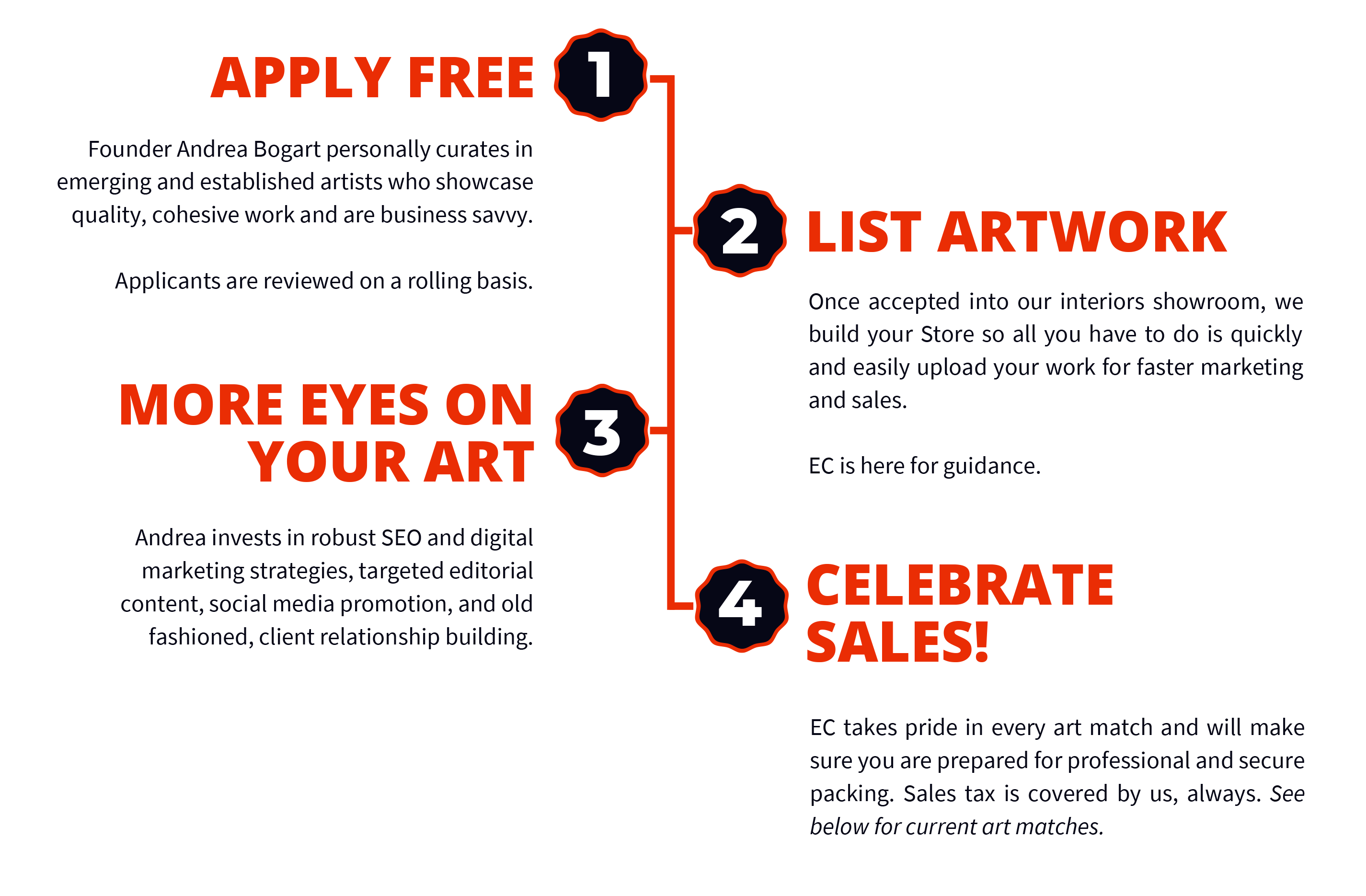W e know that expressing our business path effectively can be frustrating and confusing, including an artist biography. When potential buyers view your EC Shop it’s important to have your professionalism in full view but don’t worry if you lack a bio, CV or artists statement… Andrea and TEAM EC is here to help!
Your bio is a story filled with information that’s used in more places than you would place a CV or artist statement. Remember that your goal is to engage with every document you build and share.
You can use your finished bio to;
- create your social media profiles,
- provide materials in a cover letter,
- give to the media for publicity,
- add to your exhibition press release,
- place inside a brochure or catalogue, and
- add to a grant proposal
Important Guidelines;
- A bio should summarize, only.
- Make sure to include medium, themes, techniques and influences.
- Write in 3rd person.
- Try to tell a story.
- Save your writings as a PDF (Portable Document Format) file which can be viewed, printed, and electronically transmitted but not easily manipulated. You don’t want to share an actual Word or Pages document that can be altered by the viewer.
- Begin with a first line that showcases what’s most significant/important about the artist and their work.
- Don’t open with biographical information, like date-of-birth or education – boring…
- A bio should be between 80 and 140 words, tops to keep people’s attention without putting them to sleep.
- Keep filler sentences to a minimum and avoid repetition.
- Try to write a few versions (2-3) and give to other readers to proof and help you pull them together to create one, great bio using the strengths from each.
- Your bio should draw a connection between you and your work – Share your journey!
What you can include;
Physical
- Medium
- Style
- Give a verbal/visual description of work or works to showcase the physical qualities.
Subject Matter
- Name common themes or characteristic themes in your work (if any).
- What subjects drive your work or offer underlying importance?
Art-Historical
- Why are you, the artist, important?
- What impact have you made on history, or what precedent have you set in art-making?
- What other artists have impacted your practice, and why?
- How do you redefine a medium or media?
- Who are the peers or teachers that influenced your work?
Context
- In what political or technological climate are you working? I.e. what historical or political events might have influenced your work? (if any)
Pop Culture
- What areas of the arts or popular culture do you incorporate into your work?
- What other areas of the arts or popular culture do you engage with? E.g. creating theatrical sets, costumes, music videos, etc.
Who Says?
- Can any of the above questions be answered in a brief (1–2 sentences), engaging quotation?
Common Mistakes;
- DON’T MAKE THINGS UP! People can read right through statements like, “This artist is widely regarded for her beautiful work”. A good bio educates, it doesn’t hard-sell. Plus, remember that your goal is to create a healthy relationship and telling tall tales from the get-go doesn’t bode well for your perceived honestly or integrity.
- Keep exhibition highlights and accolades to a minimum. If the reader wants more information on your accomplishments and exhibition list, they can refer to your CV and contact you directly on Embrace Creatives.
- For goodness sake, please, refrain from “artspeak.” Keep the artsy and academic jargon to a minimum. Don’t use big, fancy words to impress. Impress with clear information about you and your art. A good rule of thumb is to impart one idea per sentence.
- Use a serif font (e.g. Times New Roman) to ensure proper formatting of “smart” or curly quotes.
- Use spell check all the time and have a few people proofread.
- Put exhibition titles in quotations (e.g. “Greater New York”), and artwork titles in italics (e.g. La Vie, 1903)
- Letting bios go “stale” is a no-no. Update yours every year or before a new exhibition and remember to replace on your Embrace Creatives profile page in the “edit profile” area.


I would be interested in this
Hi Raymond, what would you be interested in?
This is very useful information that we can all utilize…thanks!